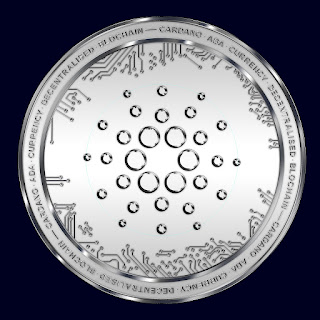What is Cardano (ADA) Cryptocurrency?
Cardano is a third generation blockchain and cryptocurrency, which aims to provide a more secure, transparent, and decentralized way of exchanging value. It was founded by Charles Hoskinson, a co-founder of Ethereum, in 2015. Since then, it has gained significant popularity and has become one of the top 10 cryptocurrencies by market capitalization.
Cardano's unique approach to blockchain technology sets it apart from other cryptocurrencies. It uses a proof-of-stake (PoS) consensus algorithm called Ouroboros, which is designed to be energy-efficient, more secure, and scalable. This means that instead of using computational power to solve complex mathematical problems, like in proof-of-work (PoW) algorithms, Cardano relies on a network of validators who stake their own coins to validate transactions and secure the network. Validators are rewarded with new coins for their efforts, and those who attempt to harm the network are penalized.
Another aspect that makes Cardano stand out is its multi-layered architecture. The platform is built on two distinct layers: the Cardano Settlement Layer (CSL) and the Cardano Computation Layer (CCL). The CSL handles the transactions and the transfer of value, while the CCL allows smart contracts and decentralized applications (dapps) to be built on top of the platform.
Cardano's native cryptocurrency is ADA, which is named after Ada Lovelace, a pioneering mathematician and computer programmer. ADA can be used to pay for goods and services or to trade on various cryptocurrency exchanges. It is also used to pay transaction fees and to incentivize validators to secure the network.
One of the main goals of Cardano is to bring financial inclusion to people who are underserved by traditional financial systems. To achieve this, the Cardano team is partnering with governments and organizations around the world to provide financial services to unbanked populations. For example, Cardano has partnered with the Ethiopian government to digitize their education system, and with the World Mobile Group to provide internet connectivity to people in rural areas.
Cardano's development is guided by the Cardano Foundation, Input Output Hong Kong (IOHK), and Emurgo. IOHK, led by Charles Hoskinson, is responsible for the research and development of the platform, while Emurgo focuses on building dapps and promoting the adoption of Cardano. The Cardano Foundation serves as an independent entity that promotes the platform's growth and adoption.
In conclusion, Cardano is a third generation blockchain and cryptocurrency that aims to provide a more secure, transparent, and decentralized way of exchanging value. Its unique approach to blockchain technology, multi-layered architecture, and partnerships with governments and organizations make it a promising project with significant potential for growth and adoption.
